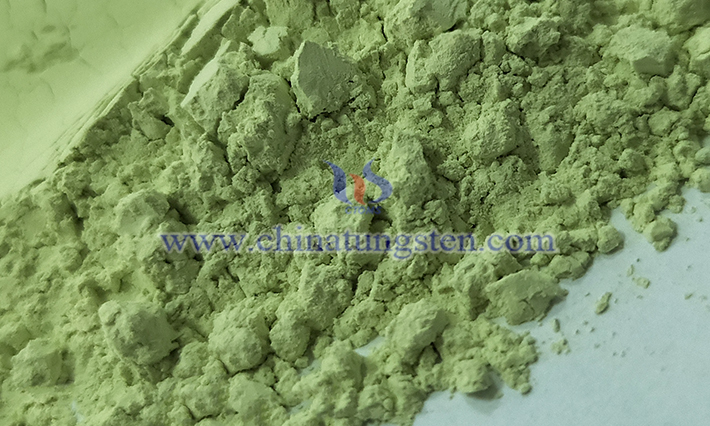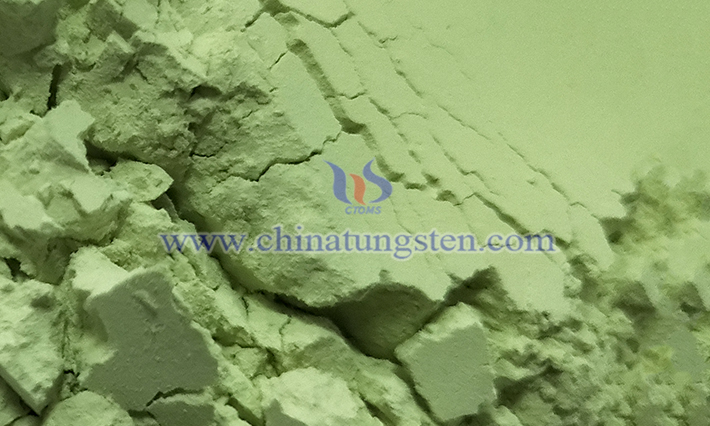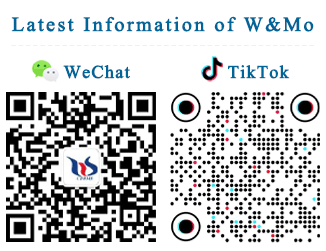What Are the Characteristics of Tungsten Trioxide?
- Details
- Category: Tungsten Information
- Published on Friday, 14 February 2025 17:11
Tungsten trioxide (chemical formula: WO3) is an important inorganic compound with the following characteristics:

I. Physical Properties
Appearance and Color: It is usually yellow in powder form, and its color may change from light to dark when heated.
Crystal Structure: It has an octahedral structure, with tungsten atoms located at the center and oxygen atoms positioned at the vertices of the eight faces. It undergoes transitions between tetragonal, orthorhombic, monoclinic, and triclinic crystal phases at different temperatures.
Density and Melting Point: Its specific gravity (density) is approximately 7.16g/cm³, with a melting point of about 1473°C and a boiling point above 1700°C.
II. Chemical Properties
Solubility: Tungsten trioxide is insoluble in water and other inorganic acids except hydrofluoric acid. However, it is soluble in alkaline solutions, especially hot alkaline solutions, forming tungstates. Additionally, it slowly dissolves in ammonia water and concentrated hot sodium hydroxide solutions.
Acidity and Basicity: It is an acidic oxide that reacts with bases to produce tungstates.
Stability: It is stable at room temperature but can decompose at high temperatures.
Oxidizing Property: It has strong oxidizing properties and can be reduced to tungsten or lower valence tungsten oxides.
Reducing Property: At high temperatures, tungsten trioxide can be reduced by hydrogen, carbon monoxide, and other reducing substances to tungsten dioxide or tungsten metal powder.
Reactivity: Tungsten trioxide reacts with chlorine gas under heating to form chloroxides but does not react with bromine or iodine. Meanwhile, it reacts vigorously with halogen compounds such as bromine pentafluoride and chlorine trifluoride.

III. Application Fields
Manufacture of Hard Alloys: Tungsten trioxide is an important raw material for the production of high-melting-point alloys and hard alloys, such as cutting tools and molds.
Ceramic Raw Material: WO3 ceramics prepared using traditional electronic ceramic sintering processes exhibit oxygen enrichment on the grain surfaces during cooling, making them potentially suitable for varistor applications.
Electrochromic Materials: Tungsten trioxide electrochromic films can be used to manufacture smart tinting glass, which has wide applications in architecture, automobiles, aircraft, and other fields for effective thermal insulation and energy reduction.
Gas-Sensitive Sensors: Utilizing its good catalytic and gas-sensitive properties, tungsten trioxide can be used to prepare gas-sensitive sensors with relatively simple structures, low costs, and high sensitivity.
Photocatalytic Materials: Tungsten trioxide is an ideal photocatalyst for water splitting and has significant application prospects in the field of solar water splitting for hydrogen production. Additionally, tungsten trioxide is also applied in air purification.
Shielding Materials: Tungsten trioxide exhibits good absorption and shielding effects on electromagnetic waves and can be used to make metal fiber radiation-proof clothing and medical shielding components.
- Chinatungsten Online: www.tungsten-oxide.com
- CTIA GROUP LTD: en.ctia.group
- Tungsten News & Price: www.ctia.com.cn
- Molybdenum News & Price: news.molybdenum.com.cn
- Tel.: 86 592 5129696; Email: sales@chinatungsten.com



 sales@chinatungsten.com
sales@chinatungsten.com